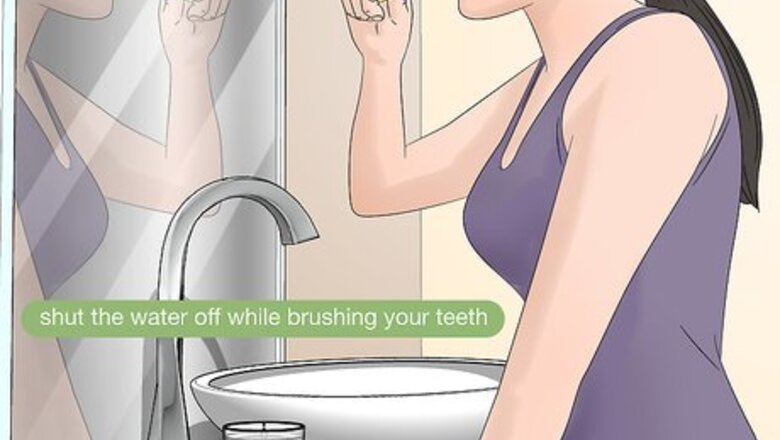
views
Turn the faucet off while you brush or shave.[1] X Research source
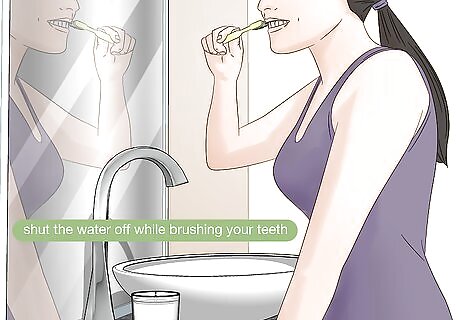
Save roughly 200 gallons (760 L) of water a month by shutting off your faucet. There’s no need to keep the water running while brushing your teeth or trimming your beard. Instead, quickly dampen your toothbrush, shut the water off, and go about your business. It’s one of the easiest ways to cut back on your water usage! For every 1 minute your tap is running, you’re pouring 1–2 US gal (3.8–7.6 L) of water down the drain, so this definitely adds up over time.
Take shorter showers.

Get into the habit of taking showers that last 5 minutes or less. Everyone loves a long, hot shower, but your showerhead uses roughly 2 gallons (7.6 L) of water a minute. You’ll save a lot of water over time if you stick with short rinses, and you’ll be just as squeaky clean as you normally would after a long shower. If you’re thinking about switching to baths to conserve water, keep in mind that a bath typically requires 30 gallons (110 L) of water while a short shower will only use 10–25 gallons (38–95 L). An average water heater uses approximately 18% of your home’s energy. As daunting as it sounds, a cold shower consumes less energy, making it more environmentally conscious with a few added health benefits.
Flush the toilet only when necessary.[8] X Research source
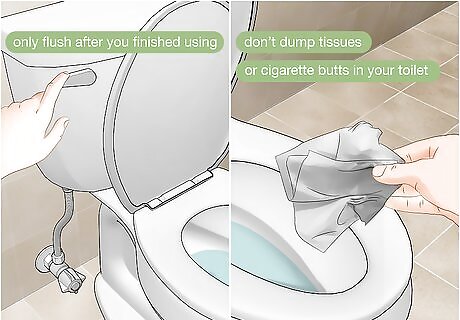
Flush only when you’ve finished using the bathroom. Don’t dump tissues or cigarette butts in your toilet to use it like a convenient waste basket. Skip that courtesy flush and only flush once when you’re done using the John. If you have one of those dual-flush toilets, be sure to use the smaller button when getting rid of liquid waste to avoid wasting water. Depending on when your toilet was manufactured, a single flush requires 1–8 gallons (3.8–30.3 L) of water. That’s a lot of water over time!
Displace some of the water in your toilet.
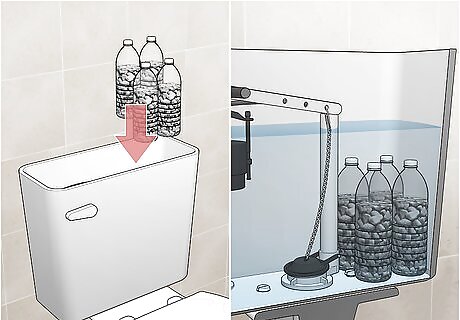
Fill a water bottle or airtight bag with pebbles and put it in your toilet’s tank. This will displace some of the water and minimize the amount of H2O needed to fill the tank. It may not seem like a lot, but a pebble-filled 12 fl oz (0.35 L) water bottle will save 12 fluid ounces (0.35 L) with each flush! If you flush four times a day, that’ll save you almost 20 gallons (76 L) of water a year! You may stumble across a website or two that suggests using sand instead of pebbles. But if your bag or bottle isn’t airtight and the sand gets into the water, it may mess with your toilet’s flush valve, so we don't advise using sand.
Switch to water-saving fixtures.[12] X Trustworthy Source National Conference of State Legislatures Bipartisan, nongovernment organization serving the members of state legislatures and their constituents Go to source
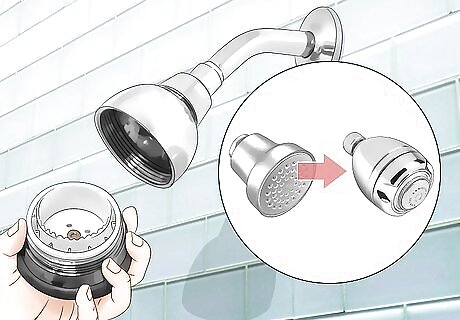
Swap out your showerhead and faucets for low-flow alternatives. By upgrading your showerhead and sink fixtures, you’ll cut back dramatically on your water usage. This is an easy way to conserve water without changing how you wash, flush, or shower! If you don’t have the time or money to upgrade your fixtures, at least install a cheap aerator on each of your faucets to throttle the water flow. The odds are high you won’t even notice it’s there!
Use water-efficient appliances.[16] X Trustworthy Source United States Environmental Protection Agency Independent U.S. government agency responsible for promoting safe environmental practices Go to source
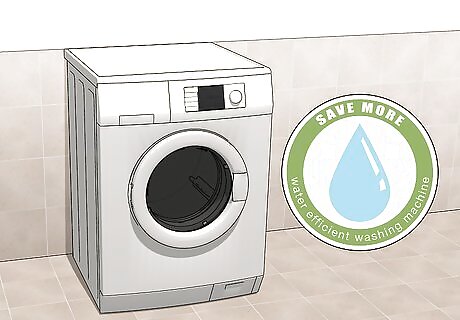
Replace dishwashers, washing machines, or water heaters. Not only will this cut back on your water consumption, but you’ll save money over time when it comes to utility costs. If you live in the United States or you purchase American appliances, look for the EPA’s WaterSense stamp of approval when you’re shopping for appliances. Any machine with this sticker on it uses at least 20% less water than the average appliance. As a rule of thumb, front-loading washers use less water than top-loading machines. If you can, buy appliances that are also energy-efficient. In the United States, look for appliances with the Energy Star sticker.
Run your dishwasher only when it's full.[21] X Research source
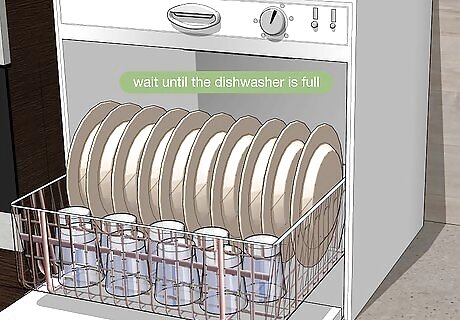
Use household appliances more effectively to save water. There’s nothing wrong with trying to keep your kitchen clean, but you’re going through a lot of water if you’re in the habit of running your dishwasher every day. By waiting until the dishwasher is full, you’re getting the most bang for your buck when it comes to the water you’re using. If you’re thinking about throwing that dishwasher out altogether to conserve water, keep in mind that running your dishwasher will almost always use less water than hand-washing your dishes. If you can’t access a dishwasher, use the two-basin method. Scrub dirty dishes in a basin or plastic tub with hot, soapy water and rinse them in another basin with cold clean water.
Do full loads of laundry with cold water.[25] X Trustworthy Source U.S. Department of Energy Official site for the U.S. Department of Energy, which provides resources related to energy safety, conservation, and efficiency Go to source
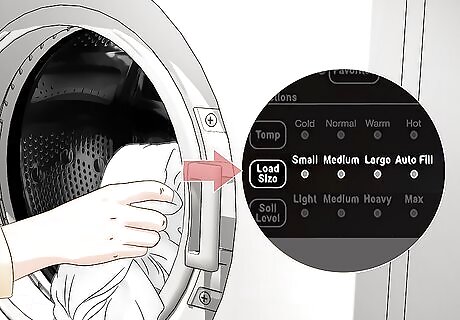
The cold water setting uses less water and energy. Always make sure that you have enough dirty clothing for a full load to conserve water. While it may feel counterintuitive, washing or cleaning clothes with too much water will actually keep your clothes from getting completely clean, so you’ll get fresher whites and deeper colors by washing full loads too! If you don't have a full load, adjust the water level dial for smaller laundry loads.
Store a pitcher of water in your fridge.[29] X Research source
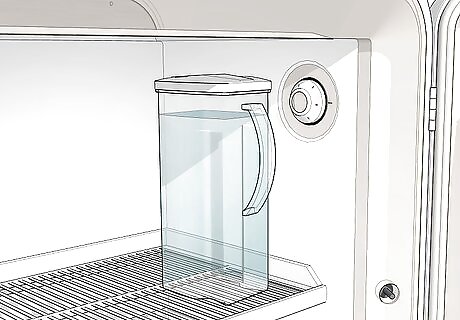
Avoid wasting water when waiting for it to get cold from the tap. When you turn the sink on, you typically have to wait 30 seconds for the water to get really cold. Every time you want to drink an ice-cold glass of water, you’re pouring a lot of perfectly good water down the drain. By filling up a pitcher and placing it in your fridge, you’ll always have some cold water ready to go without waiting on your tap. This doesn’t seem like a lot now, but over time, you’ll save water. You can buy a pitcher with a filter on it if you want to improve the quality and the taste of the water you keep in your fridge!
Defrost your food in the fridge instead of in water.
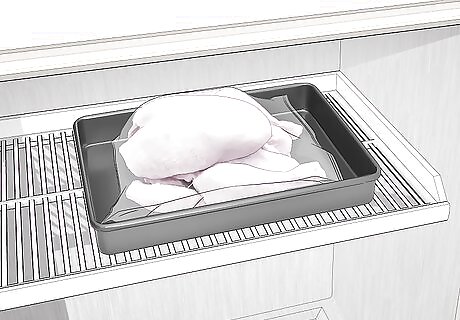
Thawing food in cold water wastes the water. Plan your meals ahead and leave enough time to defrost small amounts of food in the fridge. This will help keep any meats at a safe temperature while defrosting. If you’re stuck in a time crunch, use your microwave's “defrost” setting. Save more water when you cook by boiling just enough water to cover the food instead of filling the pot to the rim. All of these steps will save water over time!
Rinse vegetables in a bowl.
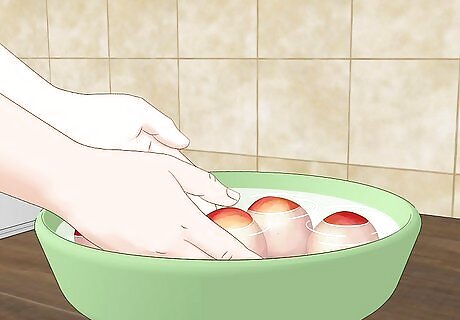
Wash fruits and veggies in a basin instead of rinsing them. Only wash your produce before use to prevent bacterial growth and spoilage. Submerge your fruits and vegetables in a large bowl or tub. If your produce has a lot of dirt, use a vegetable brush to free any grim before enjoying it!
Switch to a plant-based diet.

Cut down on meat consumption to save water. Not everyone can completely overhaul their diet due to dietary or health restrictions, but even swapping out one dairy or meat-based product from a single meal can go a long way toward helping our planet. A plant-forward diet can help cut our water footprint in half. It takes between 5,000–20,000 litres (1,300–5,300 US gal) of water to produce 1 kilogram (2.2 lb) of meat! On the other hand, tofu only requires 25 gallons (93 L).
Use less water in the garden and lawn.[36] X Research source
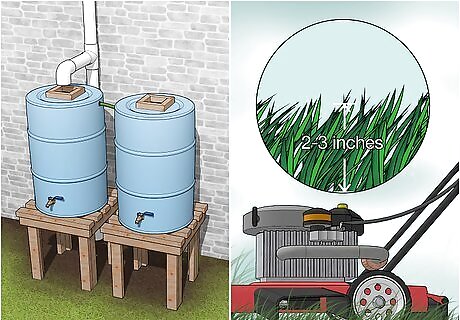
Stick with native or drought-resistant plants for your garden to avoid the need for frequent watering. Collect rainwater to water your plants and use a watering can instead of a hose. Weed and prune your garden regularly to keep plants healthy and cut back on the water requirements for your plants. Set your lawnmower blades to be 2–3 inches (5.1–7.6 cm) high when mowing, since longer grass helps soil retain moisture, which can help fight droughts. Collecting rainwater is easier than you may think. Just divert your gutters to run off into a large bin.
Fix minor leaks around your home.[40] X Trustworthy Source United States Environmental Protection Agency Independent U.S. government agency responsible for promoting safe environmental practices Go to source
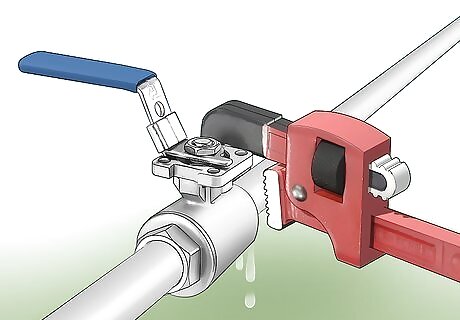
Replace damaged pipes and leaky faucets to avoid wasting water. Inspect your water meter and utility bills every month to see how much water you’re using. If you notice a random spike, it may be a sign that you have a leaky pipe somewhere in your home. A poorly-sealed pipe or leaky toilet can waste up to 90 gallons (340 L) of water a day, so resolving these problems can save a lot of water in the long run. While it varies based on the size of your household and how long you spend in the shower, the average household uses roughly 80–100 gallons (300–380 L) of water a day. This comes out to 2,400–3,000 gallons (9,100–11,400 L) a month. If that seems like a lot of water, it’s because it is! This is one of the main reasons why saving water is important. Check your toilet for internal leaks by pouring a drop of food coloring into your toilet’s tank and waiting 10 minutes. If the food coloring shows up in the bowl, you have a leaky toilet to fix or replace.
Compost food scraps instead of disposing of them.
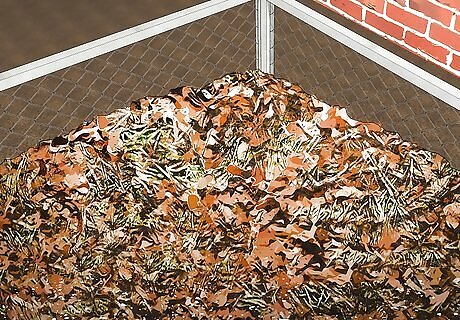
Create a compost pile or start a compost bin. When you’re cleaning up after eating, toss any food scraps in the compost so you can use it in your garden to fertilize the soil later on. This will cut back on how often you need to water your plants since compost will help plants retain moisture. It will also keep you from turning that garbage disposal on, which often wastes a lot of water. Feel free to compost any veggies, fruits, bread, or grains. Coffee grounds and eggshells are great for composting as well. Avoid composting meat or dairy. These items tend to take too long to break down and they’ll attract rats, raccoons, and other pests.
Avoid washing your car or use a bucket.
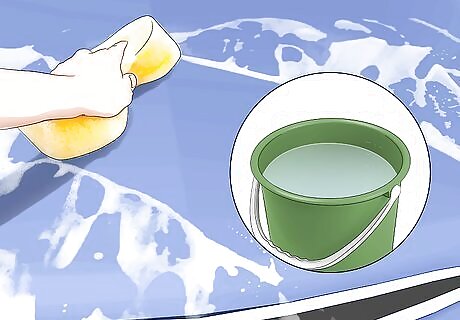
Put the hose down and let the rain clean your car. If you need to wash your vehicle, fill a few buckets instead of using your garden hose to clean your vehicle off and rinse it. If you use a hose to wash your vehicle, you’ll use roughly 50 gallons (190 L) of water. A few buckets will only require 5–10 gallons (19–38 L), though. There are waterless cleaning products that you can use to clean your vehicle to cut out the need for water entirely!
Sweep your driveway instead of washing it.[52] X Research source
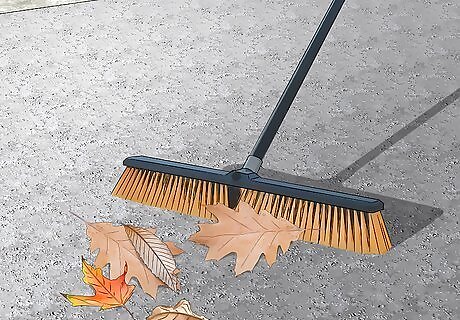
Save water by using a broom instead of a hose or pressure washer. Keep your sidewalk, driveway, and porch clean by picking a broom up and brushing any debris aside. If something is especially dirty, grab a damp cloth and clean it by hand instead of leaving the hose running. It may take a few extra minutes, but you’re saving a lot of water by sweeping or hand-wiping instead of washing things outside.

















Comments
0 comment